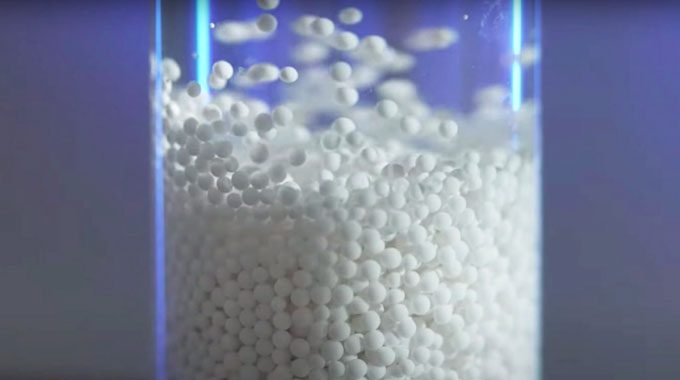Scientists Successfully Create a Mini Drug Factory, the Size of a Pinhead, Capable of Treating Cancer in Just a Few Days.
The drug factory is shaped like tiny beads made from alginate, each bead measuring only 1.5 mm in diameter. Once inside the body, they work with interleukin-2 (IL-2) molecules in the immune system to create small “explosions.” This natural compound activates the body’s white blood cells to fight against tumors.

Alginate beads measuring 1.5mm are introduced into the body to treat cancer. (Photo: Rice University).
According to Dr. Bryan Burt, a thoracic and cancer surgeon at Baylor College of Medicine, the new therapy is suitable for patients with malignant pleural mesothelioma. This is a severe disease affecting the lung lining that is difficult to treat completely with surgical removal.
With their tiny size, these “magic beads” can be directly delivered to the site of cancerous tissue without affecting the surrounding healthy tissues. The research team also utilized a substance known as a checkpoint inhibitor. This type of substance does not directly target cancer cells but trains the immune system to identify and eliminate cancer cells more effectively.
“Our data shows that delivering the magic beads to specific areas in cancerous mice yields very positive results. In fact, I have never seen cancer tumors destroyed so quickly,” Dr. Burt stated.
From the results obtained, experts believe that the new method could train the body’s T cells to remember and combat mesothelioma if it recurs. Previously, the IL-2 method had a similar mechanism but came with several severe side effects. Experts hope that the “magic beads” can address this drawback.
The technique for designing this mini drug manufacturing factory has been previously used by some researchers in the treatment of ovarian cancer. Clinical trials on humans are expected to begin in the coming months.
“There is still a lot of work to be done, but we are certainly excited about the potential of this project. This new discovery could change the current cancer treatment paradigm,” noted Omid Veiseh, a biomedical engineer at Rice University.


















































